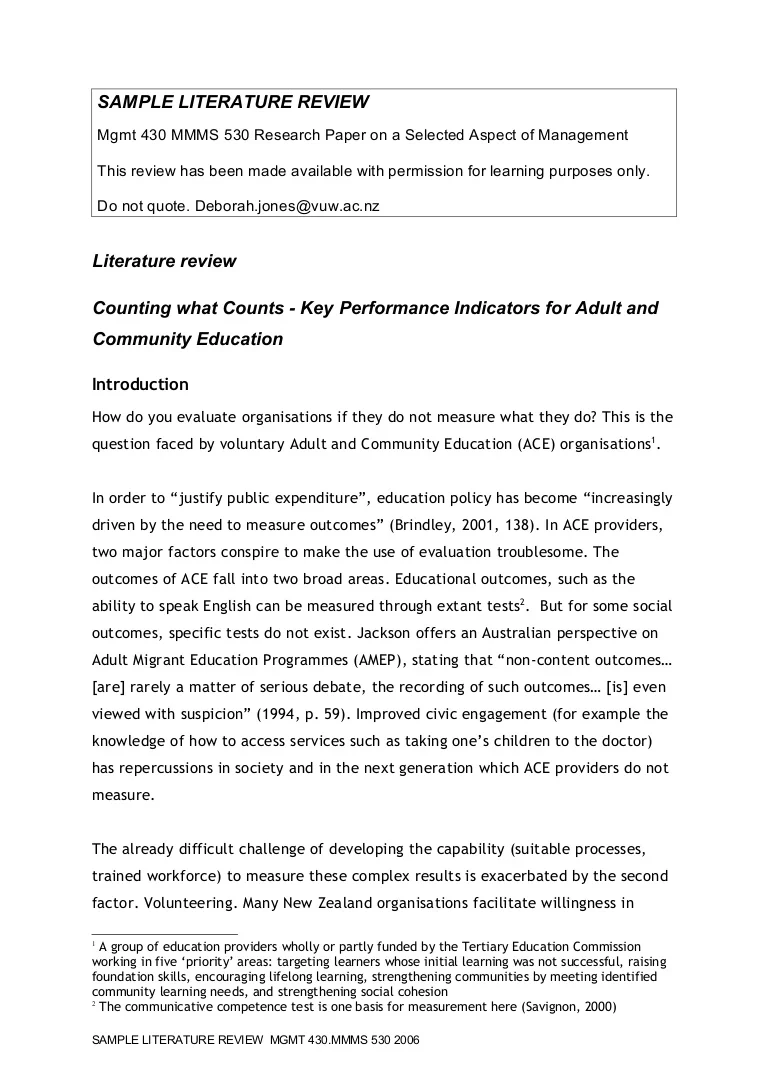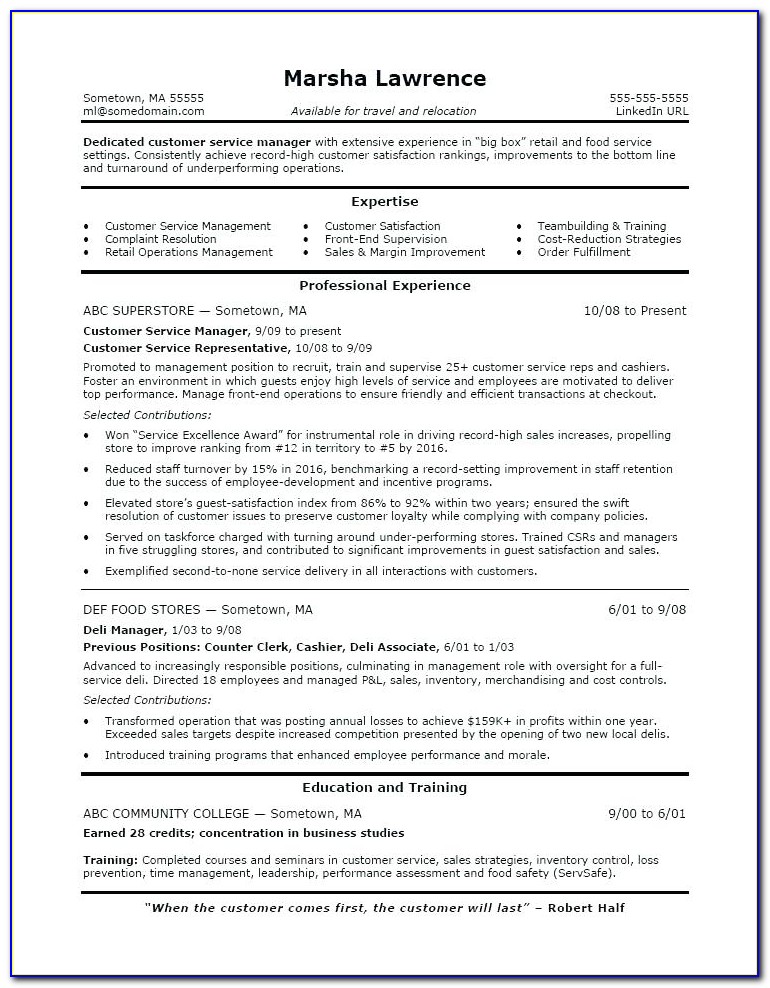
· That is, to review every single article that could be relevant to the topic is simply not possible, so a different strategy must be developed. There are several examples of articles using this approach published in business journals (e.g., McColl-Kennedy et al., ). Besides the aim of overviewing a topic, a semi-systematic review often looks at how research within a selected field has This was a very in-depth research project, particularly for a journal article. For the most part, it was well written and well organized. There was a definite need for a short review of literature to develop the situation. The article did get a little complicated in the reporting of data due to the complicated statistical procedures used renders the literature review process as a mixed research study (Onwuegbuzie, Collins, et al., ). Using Multiple Sections of a Report The CLR as a mixed research study is enhanced by recognizing that meaning-making can occur from any aspect of a work (e.g., research article, book chapter, book), including the title, abstract, literature review
Systematic Reviews | Methodology
Methodologies should present a new experimental or computational method, test or procedure. The method described may either be completely new, or may offer a better version of an existing method. The article must describe a demonstrable advance on what is currently available. The method needs to have been well tested and ideally, but not necessarily, used in a way that proves its value. Systematic Reviews strongly encourages that all datasets on which the conclusions of the paper rely should be available to readers.
We encourage authors to ensure that their datasets are either deposited in publicly available repositories where available and appropriate or presented in the main manuscript or additional supporting files whenever possible, example of article review methodology.
The information below details the section headings that you should include in your manuscript and what information should be within each section. Please note that your manuscript must include a 'Declarations' section including all of the subheadings please see below for more information.
The Abstract should not exceed words. Please minimize the use of abbreviations and do not cite references in the abstract. Reports of randomized controlled trials should follow the CONSORT extension for abstracts. The abstract must include the following separate sections:. The Background section should explain the background to the study, its aims, a summary of the existing literature and why this study was necessary or its contribution to the field.
This should include the findings of the study including, if appropriate, results of statistical analysis which must be included either in the text or as tables and figures. This section should discuss the implications of the findings in context of existing research and highlight limitations of the study. Example of article review methodology should state clearly the main conclusions and provide an explanation of the importance and relevance of the study reported.
If abbreviations are used in the text they should be defined in the text at first use, and a list of abbreviations should be provided. Please see below for details on the information to be included in these sections. If any of the sections are not relevant to your manuscript, please include the heading and write 'Not applicable' for that section. Studies involving animals must include example of article review methodology statement on ethics approval and for experimental studies involving client-owned animals, authors must also include a statement on informed consent from the client or owner.
See our editorial policies for more information. All presentations of case reports must have consent for publication. You can use your institutional consent form or our consent form if you prefer. You should not send the form to us on submission, but we may request to see a copy at any stage including after publication. See our editorial policies for more information on consent for publication.
Data availability statements should include information on where data supporting the results reported in the article can be found including, where applicable, hyperlinks to publicly archived datasets analysed or generated during the study.
By data we mean the minimal dataset that would be necessary to interpret, replicate and build upon the findings reported in the article. We recognise it is not always possible to share research data publicly, for instance when individual privacy could be compromised, and in such instances data availability should still be stated in the manuscript along with any conditions for access. Data availability statements can take one of the following forms or a combination of more than one if required for multiple datasets :.
More examples of template data availability statements, example of article review methodology, which include examples of openly available and restricted access datasets, are available here. BioMed Central also requires that authors cite any publicly available data on which the conclusions of the paper rely in the manuscript.
Data citations should include a persistent identifier such as a DOI and should ideally be included in the reference list. Citations of datasets, when they appear in the reference list, should include the minimum information recommended by DataCite and follow journal style, example of article review methodology.
Dataset identifiers including DOIs should be expressed as full URLs. For example:. Hao Z, AghaKouchak A, Nakhjiri N, Farahmand A. Global integrated drought example of article review methodology and prediction system GIDMaPS data sets.
If you wish to co-submit a data note describing your data to be published in BMC Research Notesyou can do so by visiting our submission portal. Data notes support open data and help authors to comply with funder policies on data sharing.
Co-published data notes will be linked example of article review methodology the research article the data support example. See our editorial policies for a full explanation of competing interests. If you are unsure whether you or any of your co-authors have a competing interest please contact the editorial office. If you do not have any competing interests, please state "The authors declare that they have no competing interests" in this section.
All sources of funding for the research reported should be declared. The role of the funding body in the design of the study and collection, analysis, and interpretation of data and in writing the manuscript should be declared. The individual contributions of authors to the manuscript should be specified in this section. Guidance and criteria for authorship can be found in our editorial policies. Please use initials to refer to each author's contribution in this section, for example: "FC analyzed and interpreted the patient data regarding the hematological disease and the transplant.
RH performed the histological examination of the kidney, and was a major contributor in writing the manuscript. All authors read and approved the final manuscript. Please acknowledge anyone who contributed towards the article who does not meet the criteria for authorship including anyone who provided professional writing services or materials.
Authors should obtain permission to acknowledge from all those mentioned in the Acknowledgements section. See our editorial policies for a full explanation of acknowledgements and authorship criteria. Please add authors in the format First Name, Middle initial s optionalLast Name. You can add institution or country information for each author if you wish, but this should be consistent across all authors. Please note that individual names example of article review methodology not be present in the PubMed record at the time a published article is initially included in PubMed as it takes PubMed additional time to code this information.
You may choose to use this section to include any relevant information about the author s that may aid the reader's interpretation of the article, and understand the standpoint of the author s. This may include details about the authors' qualifications, current positions they hold at institutions or societies, or any other relevant background information.
Please refer to authors using their initials. Note this section should not be used to describe any competing interests. Footnotes can be used to give additional information, which may include the citation of a reference included in the reference list.
They should not consist solely of a reference citation, example of article review methodology, and they should never include the bibliographic details of a reference, example of article review methodology. They should also not contain any figures or tables. Footnotes to the text are numbered consecutively; those to tables should be indicated by superscript lower-case letters or asterisks for significance values and other statistical data.
Footnotes to the title or the authors of the article are not given reference symbols. See our editorial policies for author guidance on good citation practice. Web links and URLs: All web links and URLs, including links to the authors' own websites, should be given a reference number and included in the reference list rather than within the text of the manuscript.
They should be provided in full, including both the title of the site and the URL, as well as the date the site was accessed, in the following format: The Mouse Tumor Biology Database.
Accessed 20 May If an author or group of authors can clearly be associated with a web link, such as for weblogs, then they should be included in the reference.
Rohrmann S, Overvad K, Bueno-de-Mesquita HB, Jakobsen MU, Egeberg R, Tjønneland A, et al. Meat consumption and mortality - results from the European Prospective Investigation into Cancer and Nutrition. BMC Medicine. Slifka MK, Whitton JL, example of article review methodology. Clinical example of article review methodology of dysregulated cytokine production. Dig J Mol Med. Frumin AM, Nussbaum J, Esposito M. Functional asplenia: demonstration of splenic activity by bone marrow scan.
Blood ;59 Suppl Wyllie AH, Kerr JFR, Currie AR. Cell death: the significance of apoptosis. In: Bourne GH, Danielli JF, Jeon KW, editors. International review of cytology.
London: Academic; Saito Y, Hyuga H. Rate equation approaches to amplification of enantiomeric excess and chiral symmetry breaking. Top Curr Chem. Blenkinsopp Example of article review methodology, Paxton P. Symptoms in the pharmacy: a guide to the management of common illness. Oxford: Blackwell Science; Doe J. Title of subordinate document.
In: The dictionary of substances and their effects. Royal Society of Chemistry. Accessed 15 Jan Healthwise Knowledgebase. US Pharmacopeia, Rockville. Accessed 21 Sept Title of supplementary material.
Lecture 15: Evaluating Research Articles
, time: 15:38How to Write an Article Review: Full Guide with Examples | EssayPro

· That is, to review every single article that could be relevant to the topic is simply not possible, so a different strategy must be developed. There are several examples of articles using this approach published in business journals (e.g., McColl-Kennedy et al., ). Besides the aim of overviewing a topic, a semi-systematic review often looks at how research within a selected field has renders the literature review process as a mixed research study (Onwuegbuzie, Collins, et al., ). Using Multiple Sections of a Report The CLR as a mixed research study is enhanced by recognizing that meaning-making can occur from any aspect of a work (e.g., research article, book chapter, book), including the title, abstract, literature review Example reference style: Article within a journal. Smith JJ. The world of science. Am J Sci. ; Article within a journal (no page numbers) Rohrmann S, Overvad K, Bueno-de-Mesquita HB, Jakobsen MU, Egeberg R, Tjønneland A, et al. Meat consumption and mortality - results from the European Prospective Investigation into Cancer and

No comments:
Post a Comment